Pork-Shrimp Shumai : Siomai Dumplings
As an Amazon Associate and member of other affiliate programs, I earn from qualifying purchases.
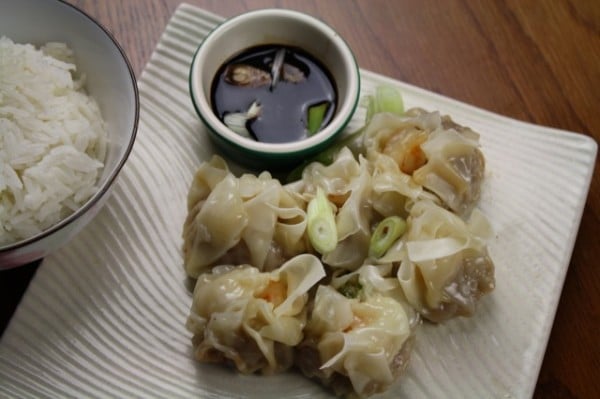
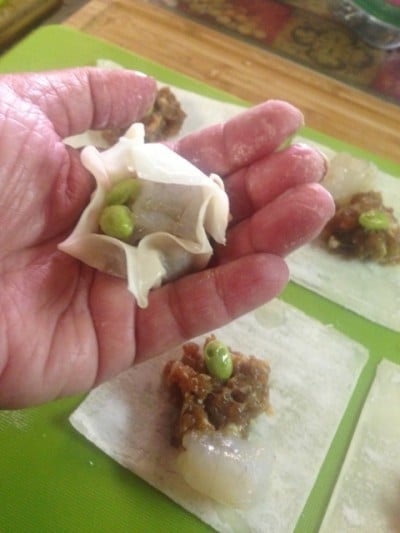
Filipinos love pork shumai served with rice or noodles. We enjoy a side dipping of soy sauce infused with calamansi (the Filipino lime). This is what we call ‘sawsawan‘ — the spirit of our Filipino dishes are defined by what the ‘sawsawan’ is. Meals are not complete for us without this side staple. Often side sauces are savory or spicy. Sometimes they are the meal extender in itself. But that’s another blog post altogether. Steaming is another way to cook if you like to tone down on the grease. You can do it in a bamboo or stainless steamer on the stove. Fill it with water. Place the pork dumplings and let it cook in the brisk boiling water. Cover it and let the steam work its magic.
Once you open the lid, the steamed vapors of Asian aromas will hit your face and hands fiercely. Best to use a pot holder to make the heat bearable. The wontons will be cooked and they’ll be sublime. Dip them into the side dipping sauce. Feel the soft, mushy goodness paired with rice or noodles. When my sons were growing up, I taught them how to make shumai, just like my mom did. We would gather round the dining table, the large bowl of pork filling mixture in the center, wonton wrappers distributed. I taught my boys how to wrap, pleat or fold. Did they learn? Someday, I’ll know if they did. But for now, they seem to enjoy coming home to the pork-shrimp shumai I cook regularly.
Pork-Shrimp Shumai- Siomai Dumplings
Equipment
- Steamer
Ingredients
- 1/2 pound (225 g.) medium-sized fresh shrimps peeled, deveined, heads and tails removed, chopped
- 1/2 pound ground pork
- 3/4 cup finely chopped carrots finely chopped carrots
- 2 stalks scallions chopped; white and green parts
- 1 teaspoon finely grated fresh ginger finely grated fresh ginger
- 1 teaspoon finely minced fresh garlic about 2 cloves, peeled
- 1 Tablespoon granulated sugar
- 1 Tablespoon cornstarch
- 2 Tablespoons Shaoxing rice wine
- 1/4 cup soy sauce
- 1/8 teaspoon sesame oil
- 1 teaspoon salt
- 1 teaspoon ground black pepper powder
- 1/2 cup green peas (frozen or canned) for garnish on top of dumpling
- 1/2 cup soy sauce for dipping sauce
- 2 Tablespoons calamansi or lemon juice for dipping sauce
- 1 whole egg for egg wash
- 1/4 cup water for egg wash
- 35 to 40 pieces won ton wrapper about 1 package, square or round shaped (Asian markets or major groceries)
Instructions
- Thaw the wonton wrappers at room temperature, but still cold. If they are too warm to the touch, they can disintegrate during prep time. Spread out the wonton wrappers on a dry surface of the counter.
- Prepare the filling: Combine the ingredients in a large mixing bowl. Mix together the ground pork, chopped carrots, minced scallions, grated ginger, garlic, sugar, cornstarch, rice wine, soy sauce, sesame oil, salt and black pepper powder.
- How to fill the dumpling: Place one won ton wrapper in the palm of your hand. Add one tablespoon of the pork filling in the center. Place a piece of chopped shrimp and edamame (or green peas) on the top. Brush the sides of the wrapper with egg wash (combine beaten egg and water). Encase the filling by closing your palm around the wrapper and gently squeeze the sides of the won ton to seal together.This will form the dumpling into a flower shape with an open top. Flatten the bottom of the dumpling so that it can stand alone.
- How to steam: Assemble the pork and shrimp shumai pieces in a shallow plate that will fit into a steamer. Fill the bottom pot of the steamer with water. Cover the water so it will boil over medium high heat. When water is boiling, add the second layer of the steamer (with holes) containing the platter of pork-shrimp shumai. Cover and steam for 25 to 30 minutes till pork and shrimp are cooked thoroughly.
- When dumplings are cooked, transfer each one on a serving platter. Serve with a side of soy sauce and fresh calamansi (or lemon) juice.
- Cook’s comments: You can use a bamboo steamer for this recipe or an stainless steel one. I use both kinds for steaming dumplings or different dishes. If using the bamboo steamer, line the bottom with parchment paper. If you do not have a regular steamer, improvise by using a deep large pot at the bottom for the boiling water. Then place a smaller, deep dish with the dumplings inside this large pot. Cover and steam according to directions.
- Ingredient tip: The original recipe used chopped water chestnuts. I substituted with finely chopped carrots which my family prefers. I also added more ground pork to the recipe than what was indicated in the cookbook.
- Disclosure: I was not paid to review this cookbook, but I am happy to recommend it to anyone who loves dumplings like I do. To purchase this book "Dumplings All Day Wong" by Lee Anne Wong (Page Street Publishing Co. 2014), here is a link to the Amazon page on my shopping tab. Click here.
- Hello, Friends! Please DO NOT plagiarize, lift or scrape my original recipes. All the images and content here are owned by Besa-Quirino LLC and COPYRIGHT PROTECTED. This means BY LAW you are NOT allowed to use my photos or content on your websites, videos, books, TV programs, media content without my permission. If you want to republish this recipe, please re-write it in your own words and simply link back to this blog to give proper attribution. It’s the legal thing to do. Thank you. Email me at [email protected]
Nutrition
Notes on Nutrition: The nutrition information provided is an estimate and will vary based on cooking methods and specific brands of ingredients used.
Did you like this recipe? I have more classic recipes inspired by my late mother’s cooking in my popular cookbook: My Mother’s Philippine Recipes. If you’re learning how to cook Filipino food or a fan of Philippine cuisine, buy my cookbooks and books on Amazon.com sold worldwide in paperback and Kindle format.
Hello, Friends! Please DO NOT LIFT OR PLAGIARIZE my original recipe, stories, photos or videos. All the images and content on this blog are COPYRIGHT PROTECTED and owned by my media company Besa-Quirino LLC. This means BY LAW you are NOT allowed to copy, scrape, lift, frame, plagiarize or use my photos, essays, stories and recipe content on your websites, books, films, television shows, videos, without my permission. If you wish to republish this recipe or content on media outlets mentioned above, please ASK MY PERMISSION, or re-write it in your own words and link back to my blog AsianInAmericaMag.com to give proper attribution. It is the legal thing to do. Thank you. Email me at [email protected]

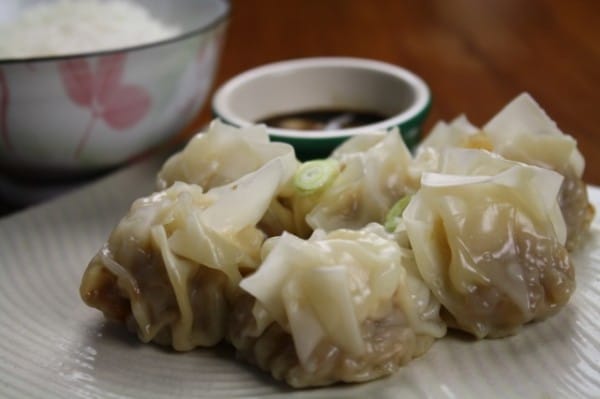
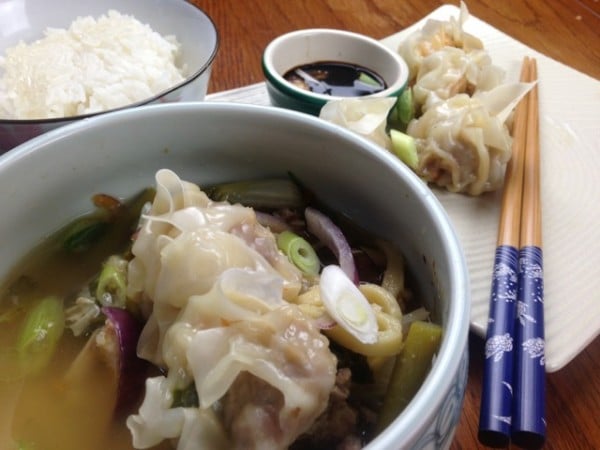
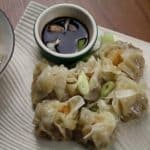
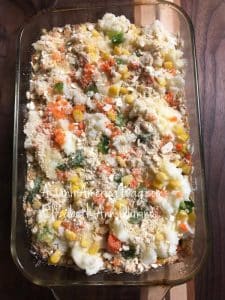
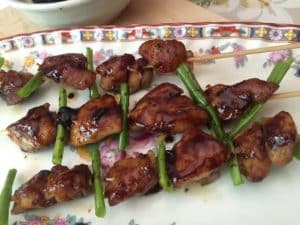
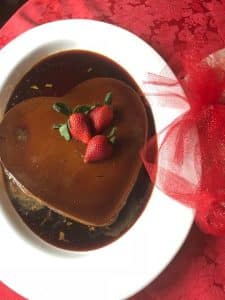
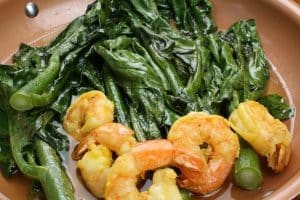
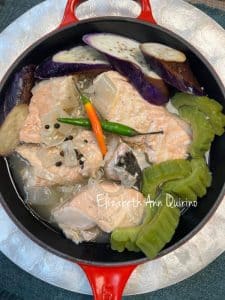
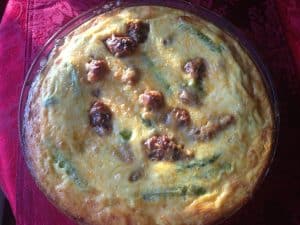
Oh my, they look great, I have tried in the past and they came out ok, I hope someday to make them as nice as yours.
Thanks, Tracy. They’re pretty easy to make. Try making them ahead in a large batch and freeze it uncooked. Thaw and cook as you go along during busy days 🙂
Oh I love the title of the book! With her name Wong and all day LONG. It’s so cool! I love shumai! Pork and shrimp is ones I make at home too. I’ve been making more gyoza but I gotta go back to shumai. It’s steamed and healthier than pan fried too. Thanks for sharing yummy recipe!
Thanks, Nami. It is a great cookbook with lots of recipes for everyday cooking. Check it out. Thanks for the blog visit!